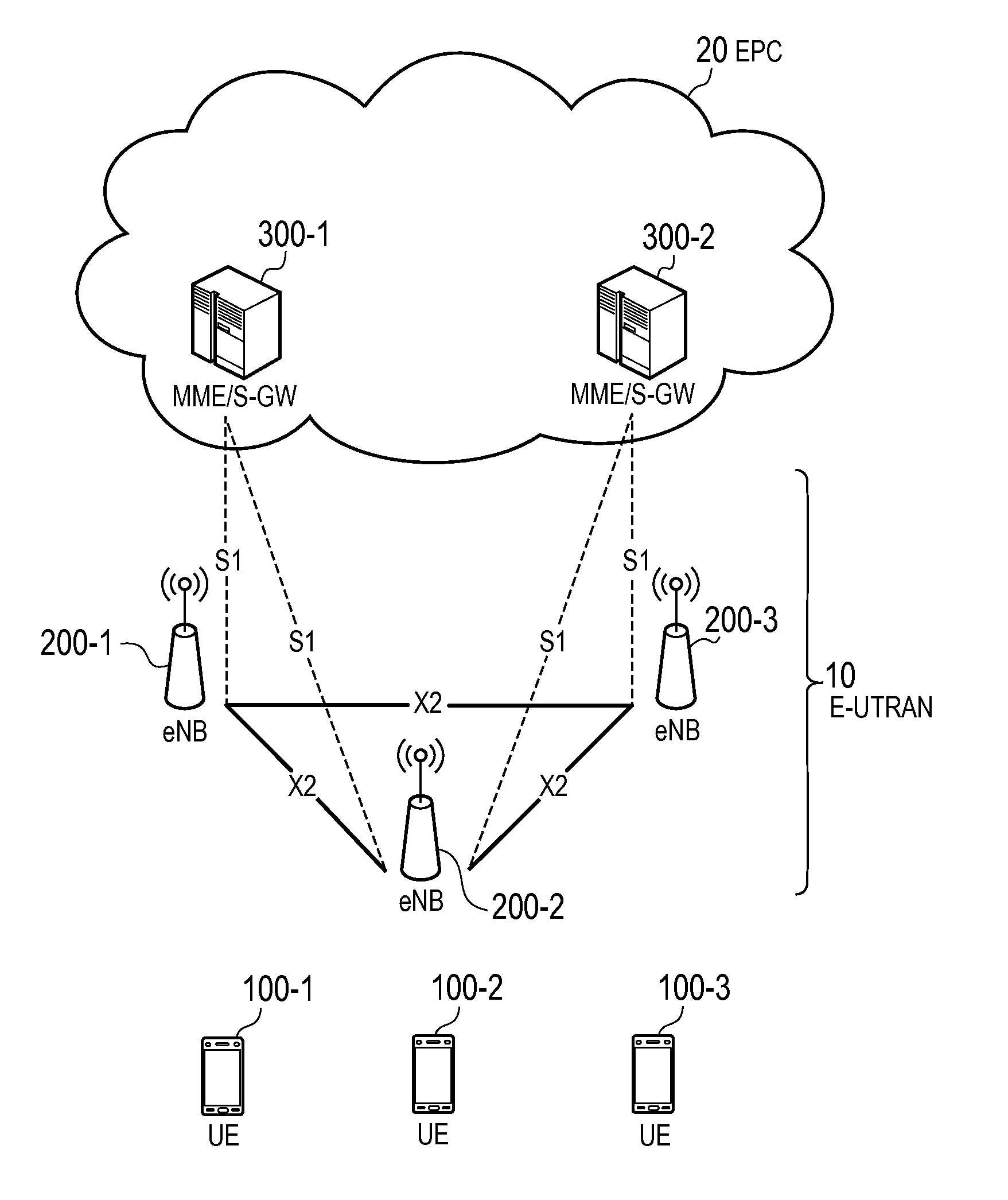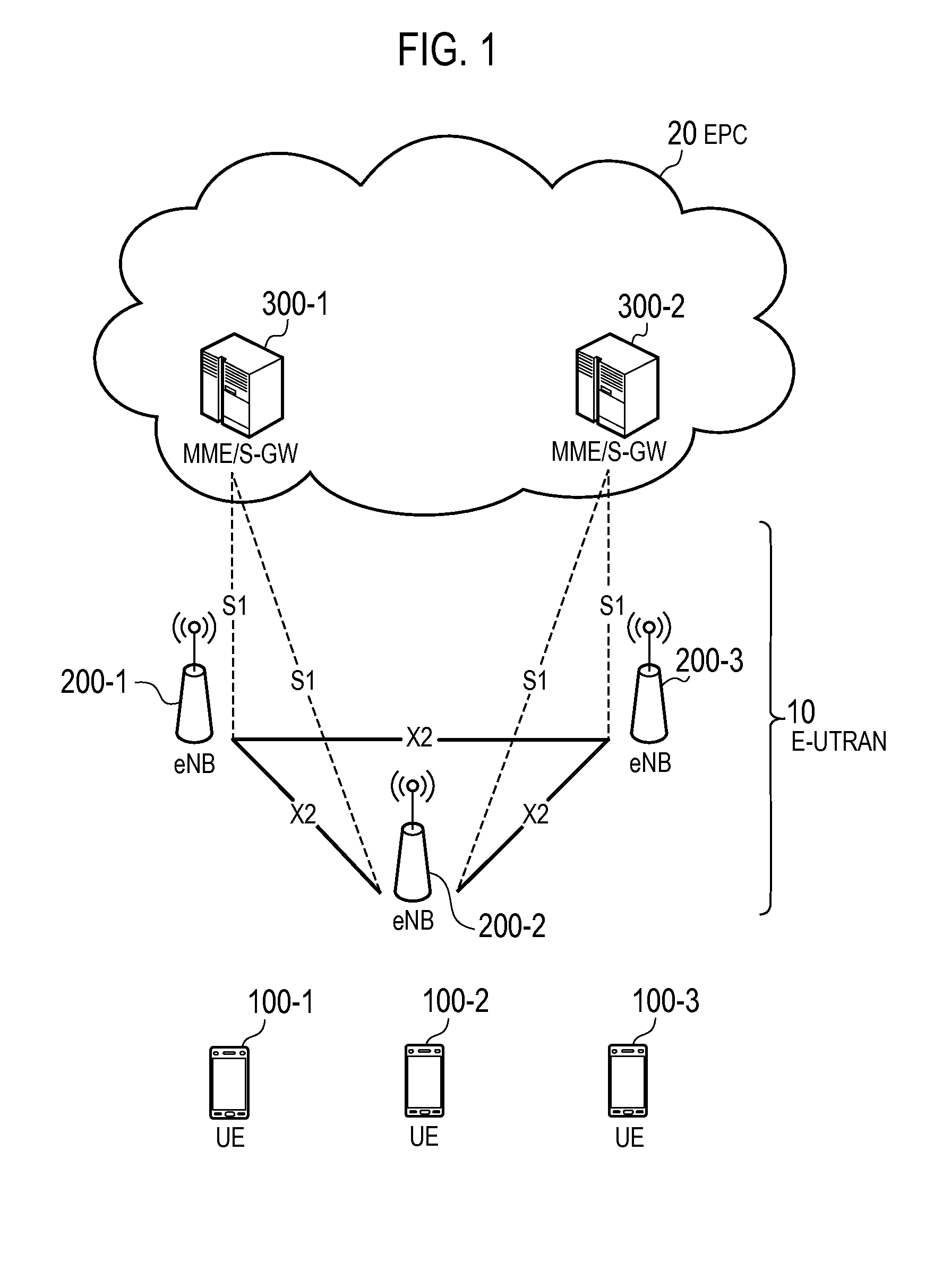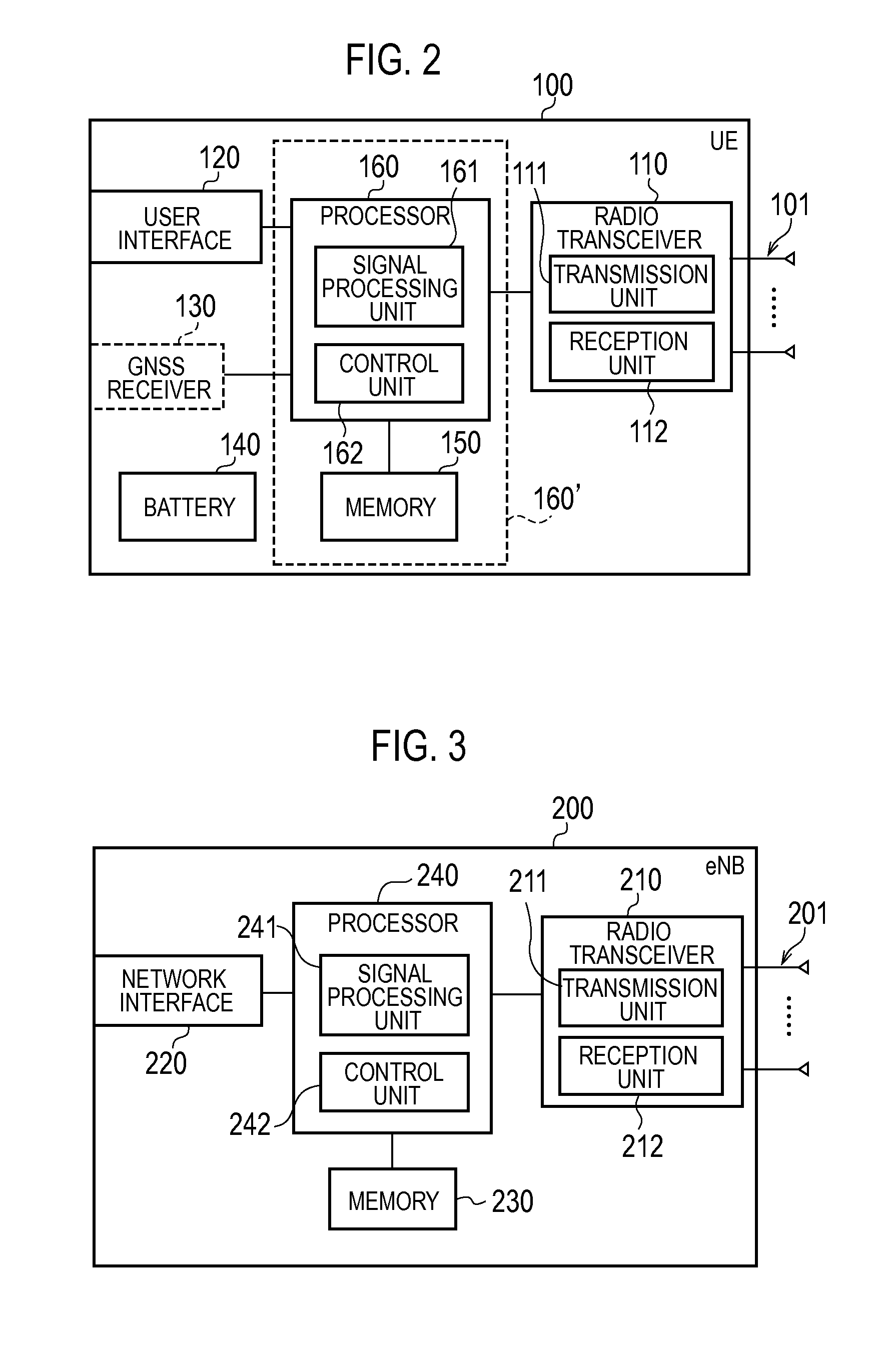Radio communication device and signal processing method
a communication device and signal processing technology, applied in orthogonal multiplex, phase-modulated carrier system, baseband system details, etc., can solve the problems of stringent channel capacity and channel capacity becoming more stringent, and achieve the effect of improving the resolution of data
- Summary
- Abstract
- Description
- Claims
- Application Information
AI Technical Summary
Benefits of technology
Problems solved by technology
Method used
Image
Examples
first embodiment
Operation
[0135]FIG. 10 is an operation sequence diagram according to the first embodiment. The operation concerning the CSI feedback will be described next.
[0136]As shown in FIG. 10, in step S11, the UE 100 receives a downlink reference signal (CRS or CSI-RS) from the eNB 200.
[0137]In step S12, the UE 100 performs channel estimation on the basis of the downlink reference signal (CRS or CSI-RS).
[0138]In step S13, the UE 100 sets the channel information obtained through channel estimation as the data to be transmitted, and then converts the data to be transmitted into an analog symbol by the analog transmission scheme.
[0139]In step S14, the UE 100 transmits the analog symbol and the uplink reference signal (SRS or DMRS) to the eNB 200.
[0140]In step S15, the eNB 200 performs symbol determination of the analog symbol on the basis of the analog symbol and uplink reference signal from the UE 100.
[0141]In step S16, the eNB 200 detects (extracts) the channel information as the data to be tr...
second embodiment
[0153]Hereinafter, a second embodiment will be described while focusing on the differences from the first embodiment. In the second embodiment, the configuration of the analog transmission processing unit 6 is different from that of the first embodiment. Other configurations are equal to those of the first embodiment.
[0154]FIG. 11 is a block diagram of a data-symbol conversion processing unit 3B in the analog transmission processing unit 6 according to the second embodiment.
[0155]As shown in FIG. 11, the data-symbol conversion processing unit 3B includes an IQ symbol mapping processing unit 31B configured to convert the reference data into a transmission symbol, a precoder generation unit 32B configured to generate the data to be transmitted as a precoder, and a precoding processing unit 33B configured to apply (multiply) the data to be transmitted to the transmission symbol and generates a transmission signal. Here, the reference data may be a known signal sequence (for example, a ...
third embodiment
[0170]Hereinafter, a third embodiment will be described on a difference from the first embodiment and the second embodiment. The third embodiment is an embodiment concerning resource mapping. The resource mapping based on the second embodiment will be described mainly.
[0171]FIG. 13 and FIG. 14 are diagrams for describing a pattern 1 of resource mapping according to the third embodiment. FIG. 13 illustrates the radio resource of one resource block in one subframe (an uplink subframe).
[0172]As shown in FIG. 13, in the pattern 1, the resource mapping unit 4 arranges the resource element to which an analog symbol is mapped adjacent to the resource element (an SRS resource) to which an SRS is mapped. The resource element (the SRS resource) to which the SRS is mapped corresponds to the first radio resource. The SRS resource is provided with leaving an interval of one subcarrier in the last symbol. The resource element to which the analog symbol is mapped corresponds to the second radio re...
PUM
 Login to View More
Login to View More Abstract
Description
Claims
Application Information
 Login to View More
Login to View More - R&D
- Intellectual Property
- Life Sciences
- Materials
- Tech Scout
- Unparalleled Data Quality
- Higher Quality Content
- 60% Fewer Hallucinations
Browse by: Latest US Patents, China's latest patents, Technical Efficacy Thesaurus, Application Domain, Technology Topic, Popular Technical Reports.
© 2025 PatSnap. All rights reserved.Legal|Privacy policy|Modern Slavery Act Transparency Statement|Sitemap|About US| Contact US: help@patsnap.com



